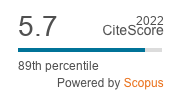The ‘buzz’ in society around insects has resulted in the appearance of insect-based pet food products on the market and more products are under development. This contribution aimed to provide background information on pet foods and the sector and to provide an overview of the current state of knowledge regarding naturalness, palatability, nutritional quality, health effects, and sustainability of insects as feed for dogs and cats. In contrast to dogs, natural diets of cats commonly contain insects but contribution to the total biomass is <0.5% in most diets. Cats and dogs can have a different palate when it comes to insects and insect species and inclusion level influence the acceptance of the food. The apparent faecal N digestibility values for insect-based foods were in the range of foods containing conventional protein sources. Based on the indispensable amino acid (IAA) digestibility values reported for black soldier fly larvae (BSFL), housefly larvae (HFL), and yellow mealworms (YMW) in chickens and requirements of growing dogs and growing cats, the first limiting IAA were methionine (BSFL, dogs and cats; YMW, dogs and cats), threonine (BSFL, dogs), and leucine (HFL, dog and cats). More long-term studies are still required to evaluate adequacy and safety of insect-based pet foods in dogs and cats as well as studies that focus on the presence of health-promoting biofunctionalities of insects. Insect proteins have a lower environmental impact than livestock meat proteins, but this is not relevant in the context of pet foods that are largely based on animal co-products with a low environmental impact. Developments in insect rearing will make insect proteins more competitive with conventional sources. For advancing insect applications beyond hypoallergenic pet foods, it will be essential to assure insects as safe and quality ingredients as well as understanding pet owner views and values regarding insect rearing.
REVIEW ARTICLE
Effect of using insects as feed on animals: pet dogs and cats
G. Bosch Related information
1Animal Nutrition Group, Wageningen University & Research, De Elst 1, 6708 WD Wageningen, the Netherlands.
*Corresponding author: guido.
, K.S. Swanson Related information*Corresponding author: guido.
2Department of Animal Sciences, University of Illinois at Urbana-Champaign, Urbana, IL 61801, USA.
3Division of Nutritional Sciences, University of Illinois at Urbana-Champaign, Urbana, IL 61801, USA.
4Department of Veterinary Clinical Medicine, University of Illinois at Urbana-Champaign, Urbana, IL 61801, USA.
3Division of Nutritional Sciences, University of Illinois at Urbana-Champaign, Urbana, IL 61801, USA.
4Department of Veterinary Clinical Medicine, University of Illinois at Urbana-Champaign, Urbana, IL 61801, USA.
Journal of Insects as Food and Feed: 7
(5)- Pages: 795 - 805

Published Online: November 27, 2020
Abstract
Keywords: health, naturalness, nutritional quality, palatability, sustainability
2022 Journal Impact Factor
5.7
source: Journal Impact Factor 2023™ from Clarivate™

Institutional Offers
For institutional orders, please contact [email protected].
Purchase Options
-
G. Daş, M.M. Seyedalmoosavi, K. Schleifer, M. Mielenz and C.C. Metges
-
-
M. Barrett, S.Y. Chia, B. Fischer and J.K. Tomberlin
-
D.G.A.B. Oonincx and M.D. Finke
-
G. Bosch and K.S. Swanson
-
K.B. Barragan-Fonseca, M. Dicke and J.J.A. van Loon
-
A. van Huis
-
M. Tschirner and A. Simon
-
S. Kelemu, S. Niassy, B. Torto, K. Fiaboe, H. Affognon, H. Tonnang, N.K. Maniania and S. Ekesi
-
S. Diener, C. Zurbrügg and K. Tockner
Call for papers: Application of insect ingredients in sustainable aquaculture




